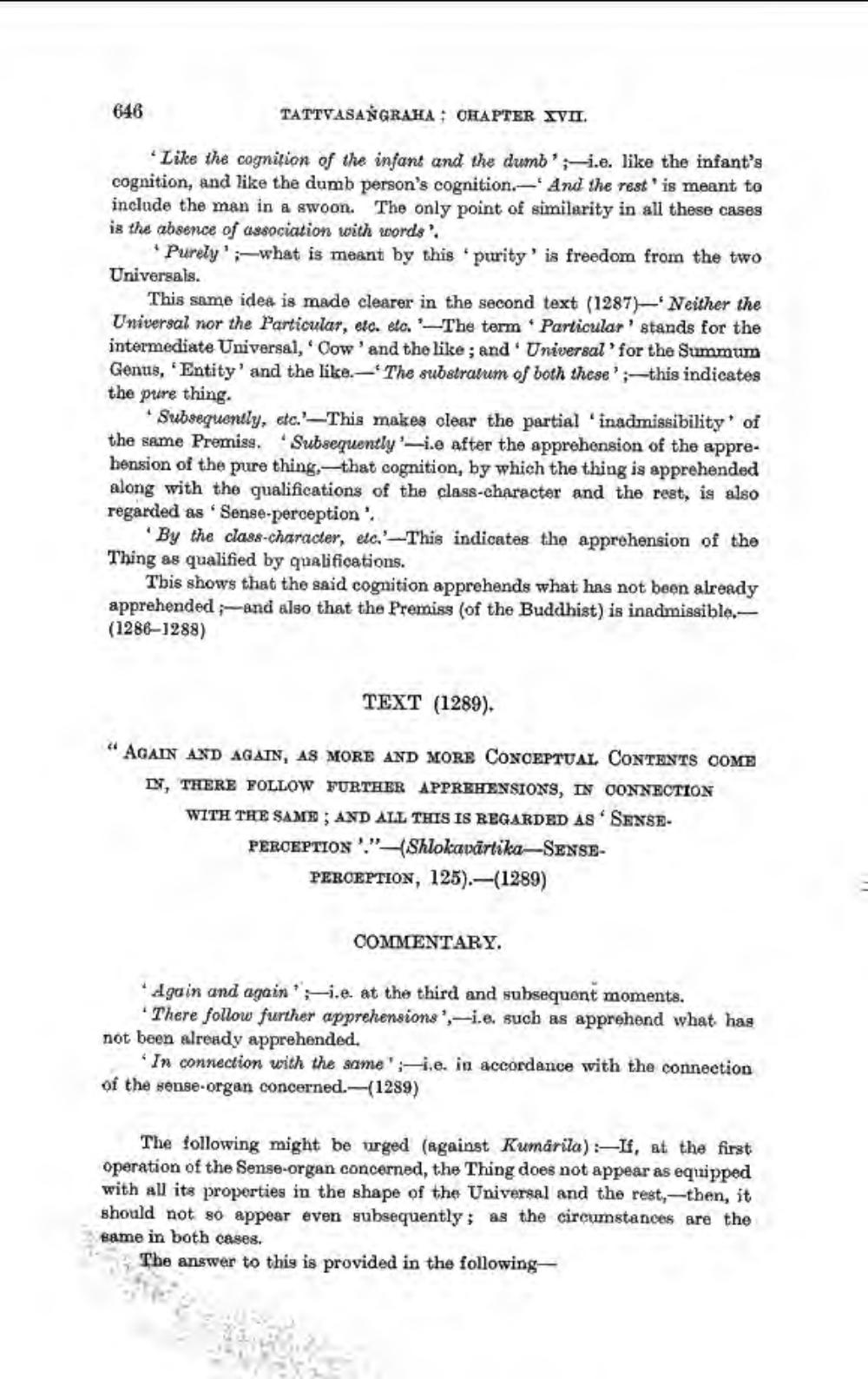________________
646
TATTVASANGRAHA: OHAPTER XVII.
Like the cognition of the infant and the dumb' i.e. like the infant's cognition, and like the dumb person's cognition. And the rest is meant to include the man in a swoon. The only point of similarity in all these cases is the absence of association with words.
Purely' what is meant by this 'purity' is freedom from the two Universals.
This same idea is made clearer in the second text (1287) Neither the Universal nor the Particular, etc. etc. The term * Particular' stands for the intermediate Universal, Cow' and the like ; and Universal' for the Summum Genus, 'Entity' and the like. The substrahim of both these' ; --this indicates the pure thing.
Subsequently, etc. --This makes clear the partial 'inadmissibility of the same Premiss. Subsequently'-ice after the apprehension of the apprehension of the pure thing,—that cognition, by which the thing is apprehended along with the qualifications of the class character and the rest, is also regarded as 'Sense-perception :
By the class-character, etc.' This indicates the apprehension of the Thing as qualified by qualifications.
Tbis shows that the said cognition apprehends what has not been already apprehended and also that the Premiss (of the Buddhist) is inadmissible. (1286–1288)
TEXT (1289).
"AGAIN AND AGAIN, AS MORE AND MORE CONCEPTUAL CONTENTS COME LY, THERE FOLLOW FURTHER APPREHENSIONS, IN CONNECTION WITH THE SAME ; AND ALL THIS IS REGARDED AS' SENSEPERCEPTION'."-Shlokavārtika-SENSE
PERCEPTION, 125).-(1289)
COMMENTARY.
Again and again' i.e. at the third and subsequent moments.
There follow further apprehensions ',-i.e. such as apprehend what has not been already apprehended.
In connection with the same';ie. in accordance with the connection of the sense organ concerned.-(1289)
The following might be urged (against Kumarila) If, at the first operation of the Sense-organ concerned, the Thing does not appear as equipped with all its properties in the shape of the Universal and the rest,--then, it should not so appear even subsequently; as the circumstances are the same in both cases.
The answer to this is provided in the following




